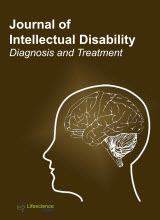jiddt
|
|
Abstract: Objectives: Autism rates in the United States are increasing at a rate of 10-15% per year. This study uses nutritional epidemiology and relates autism rates to the total B-vitamin intakes. The total amounts of B-vitamins are then compared to the previously established minimal daily requirements to see if the intakes are adequate. The apparent lower B-vitamins may result from the increased consumption of sugar and alcohol which are devoid of vitamins, minerals, protein, fat and antioxidants. Study Design: The autism rate was then compared to the percent exclusive per cent breast feeding from 2000-2004 as well as 2007-2010. Other comparisons were made between the statewide exclusive breast feeding and the binge drinking per state. The percentage of infants who participated in Washington state WIC (Womens Infant & Childrens) program were also compared to the autism rate in each county. The autism rate among 8 year olds when compared to the % increase of sugar consumption from 2002 to 2010 also showed an increase in the autism rate. Results: The total amounts of B vitamins in breast milk seemed to be inadequate compared to published mdrs. There was also a direct relationship to the autism rate with the women who were breast feeding from 2000-2004 and 2007-2010. Increased autism rates were related to increased sugar consumption and to an increased alcohol intake. Conclusions: The mothers who are exclusively breast feeding should continue their prenatal vitamins. Sugar intake and alcohol consumption should be decreased. The results suggest that autism is nutritionally related. Keywords: Autism, binge drinking, B vitamins, minimal daily requirements, WIC program, ADDM Network.Download Full Article |
|
|
Abstract: Educational legislation has made reading a priority for students with significant intellectual disabilities (ID) and associated speech, language, sensory, or physical impairments. Historically, reading instruction for students with significant ID has focused on sight word instruction, with limited exposure to other essential reading skills. This article focuses on the evidence-based instructional methods that effectively and efficiently foster the reading development of students with significant ID. The authors reviewed the literature from the past 20 years on reading interventions for students with significant ID. In spite of access and opportunity barriers that have inhibited the reading development of students with significant ID, a synthesis of the empirical research on reading instruction suggests that students with significant ID and associated disabilities can learn phonemic awareness, phonics, vocabulary, fluency, and comprehension skills with direct instruction. Implications for providing reading instruction that effectively promotes reading development are discussed and areas for future research are identified. Keywords: Intellectual disabilities, sight word instruction, reading instruction, speech and language impairment, physical impairments.Download Full Article |
|
|
Abstract: Persons with intellectual disability (PWID) have fewer opportunities for enrolment in school programs and post-school employment than do their peers with typical development. Evidence suggests that attitude toward PWID is a main factor in either promoting or limiting better life conditions for this population. In this paper, the goal was to determine the cognitive information integration rules underlying the expectations of 174 special education teachers and students with regard to job training for PWID. In order to accomplish this goal, four factors (Gender, Severity of disability, Type of task, and Emotional traits) were orthogonally combined to implement a cognitive algebra study design. We obtained 48 experimental conditions, with each one presented as a scenario describing a PWID in a work training situation. Participants read these scenarios and were asked to judge the probability of the success of PWID with regard to learning the skills needed to complete the required work.Patterns of response allowed us to identify low, moderate, and high viewpoints with regard to participants’ judgments of predicted success. Personal factors (Emotional traits and Severity of disability) and the Type of task factor were considered the most important in influencing the participants’ judgment. These factors seemed to be integrated in a complex systematic cognitive pattern. Implications from this type of result with regard to PWID and work training are discussed in this paper. Keywords: Intellectual disability, attitudes, special education teachers, work training, cognitive algebra.Download Full Article |
|
|
Abstract: A prominent symptom of Autism Spectrum Disorder includes restricted and repetitive behaviours. This symptom has been divided into three subtypes: repetitive motor behaviour, insistence on sameness and circumscribed interests. In the past, the neural correlates of these behaviours have been largely understudied. More recently, neuroimaging studies have pointed to a number of neural networks that may underlay these behaviours. However, results from this work have been varied and remain difficult to integrate. The purpose of this review is to summarize recent neuroimaging studies on restricted and repetitive behaviours in autism, and to provide an organized framework that will permit a clearer understanding of the neural correlates of these behaviours. Using a developmental perspective, this review will identify that there are distinct and overlapping neural networks that are associated with repetitive motor behaviour, insistence on sameness and circumscribed interests. In addition, this review will identify a series of executive and affective function tasks that have proven efficacious in the study of repetitive behaviour. Keywords: Autism spectrum disorder, neuroimaging, repetitive behaviour, repetitive motor behaviour, insistence on sameness, circumscribed interests.Download Full Article |
|
|
Abstract: Autism spectrum conditions (ASC) and the delayed development of object permanence is often not questioned, and is rarely understood. The following paper attempts to explore this idea and suggests reasons for why such development is delayed and the possibility that certain difficult behaviours seen in children with ASC are less likely to be connected to having poor theory of mind and more connected to lacking generalized concepts of object permanence. Keywords: Autism Spectrum Conditions, Theory of Mind, Object Permanence, Challenging Behaviour.Download Full Article |


